Saturday, February 17 2024
  It’s February and here we all are at the Round Robin Blog Hop to discuss GMC. You ask, what’s GMC? Well, it’s the backbone of all fiction writing from flash fiction to lengthy novels and includes all genres. Boil it down to easy to understand – What does the protagonist want? (Goal) Why does he or she want it? (Motivation) and What’s stopping him from attaining it? (Conflict.) It’s February and here we all are at the Round Robin Blog Hop to discuss GMC. You ask, what’s GMC? Well, it’s the backbone of all fiction writing from flash fiction to lengthy novels and includes all genres. Boil it down to easy to understand – What does the protagonist want? (Goal) Why does he or she want it? (Motivation) and What’s stopping him from attaining it? (Conflict.)
XX
It's this last bit that makes the story a page turner. In my journey as an author, I learned this concept from several authors with successful writing careers. I also have an exellent book written by a friend and editor that spells the whole concept out for readers of all levels of experience. Check out Goal, Motivation & Conflict by Debra Dixon - it's an excellent reference for your writer's shelf.
XX
Consider this example: If Jackie wants and ice cream, because he loves ice cream and his grandfather gave him money to get some, that’s goal and motivation. If the truck just happens to have stopped out front of his house and he dashes to the street, tells the man what he wants, hands over the money, and walks away with his ice cream there is no conflict. Nothing to write about.
XX
But what if he wants an ice cream and the truck is there, but he has no money? Or what if he has the money and has been waiting for the truck to come, but for some reason, it never came that day?  Or what if he runs to the truck and trips and falls and the cash he’d been clutching in his hand rolled down the storm drain? NOW there is a story. What is Jackie going to do now? Or what if he runs to the truck and trips and falls and the cash he’d been clutching in his hand rolled down the storm drain? NOW there is a story. What is Jackie going to do now?
XX
In that scenario, there is little Jackie can do to change some of the problems. He can’t crawl into the drain to retrieve his coins that disappeared into the water. And he can’t make the truck magically appear if it did, indeed, skip his street that day. But no money to start with might offer some solutions if he wants an ice cream bad enough. He could ask his dad if he’d give him the money. He might ask his mom if there is any chore she’d like done that he could do to earn the money. He could steal it out of his big sister’s purse. Or he could check the the floor around the driver’s seat in his grandfather’s truck because he knows his grandfather is always losing change out of his pocket. The choices he makes and the effort he expends to gain his goal is the story.
XX
 This is true of any genre. In a romance there are two protagonists who each have their personal goal and a reason for wanting it, and something in their way. But being a romance, this means the goals may be frustrated by the other character’s conflicting goal. He sees her and wants a date. But she’s been hurt and is reluctant to get involved with anyone. So, what is he going to do to change her mind and get her to say yes to a date? Maybe neither one of them is looking for someone to love. Both may have been hurt and built walls around their hearts. This is what is called the “inner” conflict. But there’s usually an outer conflict that is going to toss these two people together often enough, that they end up falling in love despite their initial reluctance. This outer conflict often includes opposing goals. Think of all the Hallmark movies you’ve ever seen. A common theme often includes one or the other trying to keep a family business going and the other one is trying to buy out the property for something that will kill the family business. That conflict is what needs to be resolved before they can have their happy ever after, and it’s what makes the story. This is true of any genre. In a romance there are two protagonists who each have their personal goal and a reason for wanting it, and something in their way. But being a romance, this means the goals may be frustrated by the other character’s conflicting goal. He sees her and wants a date. But she’s been hurt and is reluctant to get involved with anyone. So, what is he going to do to change her mind and get her to say yes to a date? Maybe neither one of them is looking for someone to love. Both may have been hurt and built walls around their hearts. This is what is called the “inner” conflict. But there’s usually an outer conflict that is going to toss these two people together often enough, that they end up falling in love despite their initial reluctance. This outer conflict often includes opposing goals. Think of all the Hallmark movies you’ve ever seen. A common theme often includes one or the other trying to keep a family business going and the other one is trying to buy out the property for something that will kill the family business. That conflict is what needs to be resolved before they can have their happy ever after, and it’s what makes the story.
XX
 Consider a police procedural – the detective is called in to figure out who was responsible for the dead body. Goal – find the killer, Motivation – that’s their job, Conflict – there are dozens of possibilities as evidenced by the long running police procedurals on TV and in written fiction. No ID for the dead body? No fingerprints or DNA left behind by the killer. Traffic and security cameras catch just a glimpse of the perp, who happened to be aware enough to never show his face. The detective has a handy person of interest who happens to have a good reason to kill, and no alibi, but turns out to be innocent and now the trail has gone cold to the real killer. The conflicts are endless and in real life many murders never get solved. Consider a police procedural – the detective is called in to figure out who was responsible for the dead body. Goal – find the killer, Motivation – that’s their job, Conflict – there are dozens of possibilities as evidenced by the long running police procedurals on TV and in written fiction. No ID for the dead body? No fingerprints or DNA left behind by the killer. Traffic and security cameras catch just a glimpse of the perp, who happened to be aware enough to never show his face. The detective has a handy person of interest who happens to have a good reason to kill, and no alibi, but turns out to be innocent and now the trail has gone cold to the real killer. The conflicts are endless and in real life many murders never get solved.
XX
I could go on with other genres, but I think you get the idea. If there is no conflict, there is no story. To keep your reader turning pages, 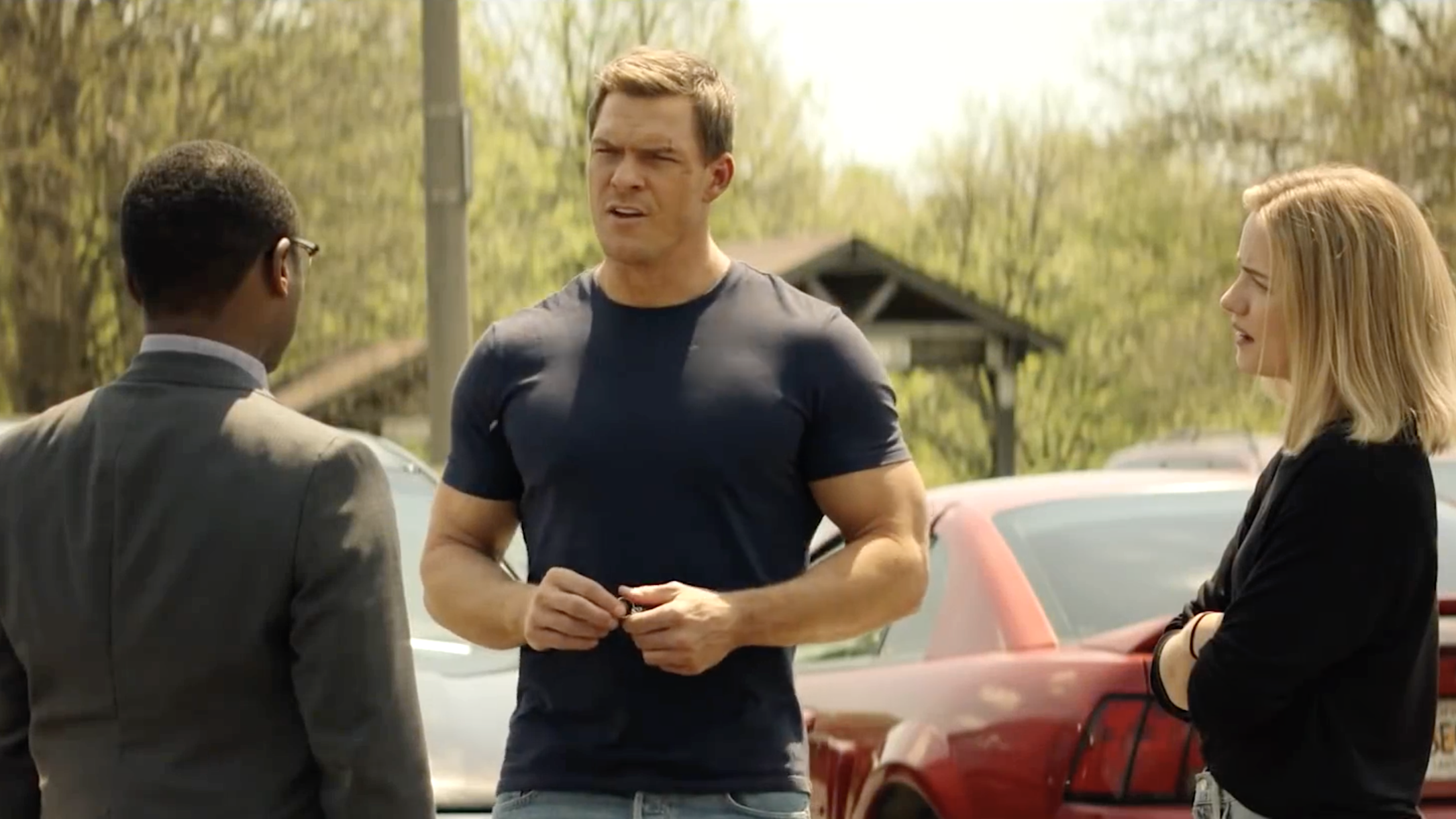 you need to keep them guessing, which means not giving away the resolution until the very last page. Some stories might be easy for a reader to guess how the main conflict might get resolved, so now the author needs to throw twists into the story – smaller conflicts that pop up to thwart the hero. Think of the Jack Reacher stories. We all know Reacher is going to win in the end and any fight he gets into he’s going to trounce the other guy, but along the way, he just seems to keep running into one conflict after another. He’s always minding his own business and his main goal is to just stay mobile and enjoy life and travel to different places. Yet he always seems to run into someone who’s struggling with something or a victim or someone caught up in an unfair fight. Being Reacher, his sense of fair play is his conflict. He can’t just ignore what he’s seen. He feels compelled to get involved and fix their problem, which now becomes his problem. If it’s a war story, there is always the enemy to defeat but that enemy is never as clueless as the characters on Hogan’s Heroes, and their plots, plans, and firepower become the conflict for our heroes. A spy story – pretty much the same. Pick a genre – ther’s always a conflict that needs to be overcome or resolved. you need to keep them guessing, which means not giving away the resolution until the very last page. Some stories might be easy for a reader to guess how the main conflict might get resolved, so now the author needs to throw twists into the story – smaller conflicts that pop up to thwart the hero. Think of the Jack Reacher stories. We all know Reacher is going to win in the end and any fight he gets into he’s going to trounce the other guy, but along the way, he just seems to keep running into one conflict after another. He’s always minding his own business and his main goal is to just stay mobile and enjoy life and travel to different places. Yet he always seems to run into someone who’s struggling with something or a victim or someone caught up in an unfair fight. Being Reacher, his sense of fair play is his conflict. He can’t just ignore what he’s seen. He feels compelled to get involved and fix their problem, which now becomes his problem. If it’s a war story, there is always the enemy to defeat but that enemy is never as clueless as the characters on Hogan’s Heroes, and their plots, plans, and firepower become the conflict for our heroes. A spy story – pretty much the same. Pick a genre – ther’s always a conflict that needs to be overcome or resolved.
XX
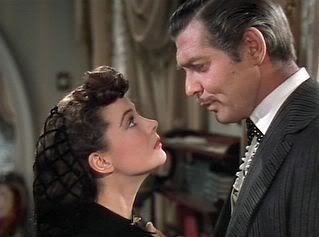 A story doesn’t always have to have a happy ending or a satisfying resolution. Consider Romeo and Juliette. Or Gone With the Wind. In the first neither party finds their happy ending, and both commit suicide rather than submit to their families' rivalries. In Gone With the Wind, Scarlett loves Ashley and wants him to return her love, but he’s in love with someone else. GWTW does not have the ending Scarlett wants and she even alienates Rhett who does love her. Who doesn’t remember his big line: “Frankly my dear, I don’t give a damn.” But, it’s those conflicts that make the stories memorable. A story doesn’t always have to have a happy ending or a satisfying resolution. Consider Romeo and Juliette. Or Gone With the Wind. In the first neither party finds their happy ending, and both commit suicide rather than submit to their families' rivalries. In Gone With the Wind, Scarlett loves Ashley and wants him to return her love, but he’s in love with someone else. GWTW does not have the ending Scarlett wants and she even alienates Rhett who does love her. Who doesn’t remember his big line: “Frankly my dear, I don’t give a damn.” But, it’s those conflicts that make the stories memorable.
XX
 If this entire concept has never occurred to you before, consider your favorite book of all time and ask yourself: What did my favorite character want? Why did he want it? And Why couldn’t he have it? I’m sure you’ll be able to answer all three questions and it was in resolving that last question that the book entertained and became a favorite. If this entire concept has never occurred to you before, consider your favorite book of all time and ask yourself: What did my favorite character want? Why did he want it? And Why couldn’t he have it? I’m sure you’ll be able to answer all three questions and it was in resolving that last question that the book entertained and became a favorite.
XX
Want another take on GMC – check out my fellow Round Robin Blog Hoppers”

Dr. Bob Rich
Anne Stenhouse
Victoria Chatham
Connie Vines
Helena Fairfax
Diane Bator
Saturday, January 20 2024
 To start off 2024 on our Round Robin Blog Hop, we thought we’d share ideas on what kind of giveaways or sales have worked best for us as authors and what hasn’t worked. I am eagerly looking forward to checking out fellow blog hoppers experiences because I’m not sure I have a way to measure my successes or lack of. For outright advertising, I’ve tried Facebook promotions, where you can put out small amounts rather than figures in the $100s, but I've had no measurable results I could see. My publisher, however, with their clout, has invested in BookBub and other places that do have measurable results, but the costs for indy authors might be too steep. So, if outright advertising isn’t an option, do free books and giveaways work? To start off 2024 on our Round Robin Blog Hop, we thought we’d share ideas on what kind of giveaways or sales have worked best for us as authors and what hasn’t worked. I am eagerly looking forward to checking out fellow blog hoppers experiences because I’m not sure I have a way to measure my successes or lack of. For outright advertising, I’ve tried Facebook promotions, where you can put out small amounts rather than figures in the $100s, but I've had no measurable results I could see. My publisher, however, with their clout, has invested in BookBub and other places that do have measurable results, but the costs for indy authors might be too steep. So, if outright advertising isn’t an option, do free books and giveaways work?
XX
 Years ago, before I was ever published, I began to attend conferences and writer’s meetings to learn from others how the craft itself was done. I hesitate to mention how long ago that was, but it was a lot of years. To this day, I have a small nail file/emery board on my desk, which I still use. Printed on one side is the name and website of the author who gave them away at my very first conference. Surely not every bit of swag stays around that long, but I wonder . . . I visited that author’s site and I purchased a few of her books. So, that particular file did equate to a sale. I wonder how many other sales came from those files? Even if, all that little piece of swag did was to get the person who picked it up to visit the website, that would seem to be a win as well. It’s the first step toward a purchase. Perhaps the visitor to the website signed up for the author’s newsletter and that might lead to a sale in the future. In today’s world, it’s all about driving traffic to your website where you presumably have your books on display with links to purchase. Years ago, before I was ever published, I began to attend conferences and writer’s meetings to learn from others how the craft itself was done. I hesitate to mention how long ago that was, but it was a lot of years. To this day, I have a small nail file/emery board on my desk, which I still use. Printed on one side is the name and website of the author who gave them away at my very first conference. Surely not every bit of swag stays around that long, but I wonder . . . I visited that author’s site and I purchased a few of her books. So, that particular file did equate to a sale. I wonder how many other sales came from those files? Even if, all that little piece of swag did was to get the person who picked it up to visit the website, that would seem to be a win as well. It’s the first step toward a purchase. Perhaps the visitor to the website signed up for the author’s newsletter and that might lead to a sale in the future. In today’s world, it’s all about driving traffic to your website where you presumably have your books on display with links to purchase.
XX
On my website, in addition to a page with all my books and buy links, I have a page where I offer short stories. Free. If someone reads one or more of those stories and likes it, then perhaps they'll check out the book page to see if any of my novels appeal to their reading preferences. So, do free books work?
XX
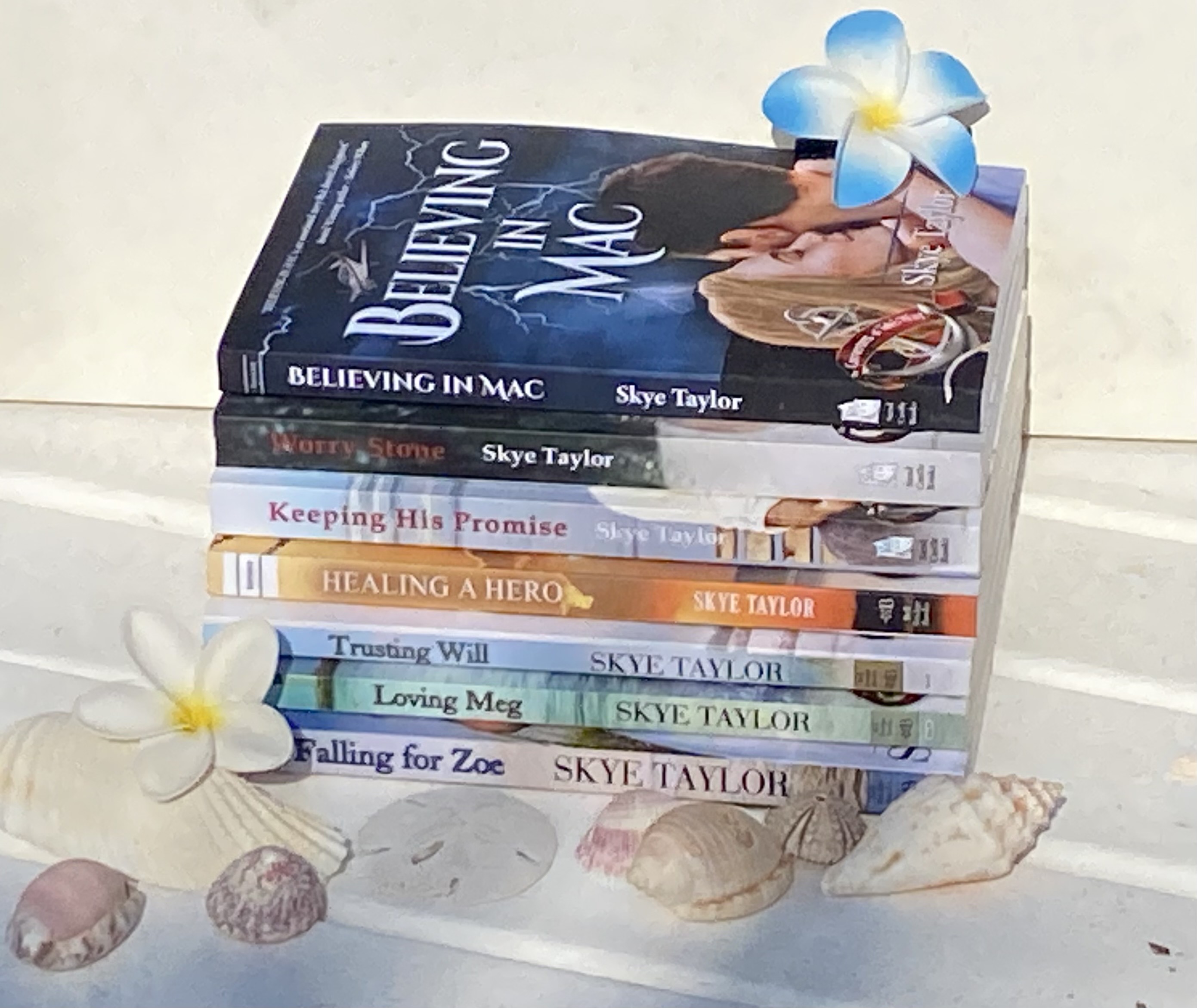 Last summer one of my faithful readers loaned a paper copy of the first book in my romance series to a friend of hers – a woman I have never met. Turned out that friend loved Falling for Zoe so much, she went online and bought the whole series – in print. That’s 8 more books. I know about that sale because that new reader found my website and then contacted me on Facebook. Which leads me to wonder how many other sales might I have made because someone found, won, or borrowed a book of mine and liked it enough to see what else I might have out? Last summer one of my faithful readers loaned a paper copy of the first book in my romance series to a friend of hers – a woman I have never met. Turned out that friend loved Falling for Zoe so much, she went online and bought the whole series – in print. That’s 8 more books. I know about that sale because that new reader found my website and then contacted me on Facebook. Which leads me to wonder how many other sales might I have made because someone found, won, or borrowed a book of mine and liked it enough to see what else I might have out?
XX
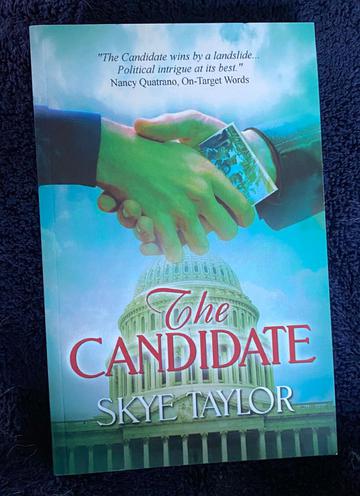 I gave my son a copy of the first of my books to be published. He took it when he and his wife went camping in Acadia Maine, and was sad when he finished it for two reasons. One: he loved the story and didn’t want it to end, and two: because he didn’t have another book to read (before everyone had a half dozen ebooks on their phones.) I asked, surely a campground like Acadia had one of those book shelves where you could trade one book for another. He said no, of course not - I’d signed it for him. I shook my head, “Oh, Alex, I’d have given you a new copy in a heartbeat. You just never know who might have picked that book off the shelf and loved it as much as you did and I’d have gained another reader.” I gave my son a copy of the first of my books to be published. He took it when he and his wife went camping in Acadia Maine, and was sad when he finished it for two reasons. One: he loved the story and didn’t want it to end, and two: because he didn’t have another book to read (before everyone had a half dozen ebooks on their phones.) I asked, surely a campground like Acadia had one of those book shelves where you could trade one book for another. He said no, of course not - I’d signed it for him. I shook my head, “Oh, Alex, I’d have given you a new copy in a heartbeat. You just never know who might have picked that book off the shelf and loved it as much as you did and I’d have gained another reader.”
XX
Whenever I am asked to donate a book for a raffle or gift basket, I gladly hand one over. I’ve been known to leave copies of my books in waiting rooms and in lounges at the airport. Like the friend who loaned one of my books to another woman, or a book left at a campground or in a waiting room, it might put my book in the hands of someone who wouldn’t have purchased one or even known about me before they found that book.
XX
 And that leads me back to the swag. I have several things from pens, which everyone uses, to mini-flashlights and small notebooks. As long as those pens are sitting on someone’s desk there’s a chance they might check out the website listed on it. Same goes for the flashlight, or the notebook. All of the above options lead to name recognition and isn’t that what we are after? And that leads me back to the swag. I have several things from pens, which everyone uses, to mini-flashlights and small notebooks. As long as those pens are sitting on someone’s desk there’s a chance they might check out the website listed on it. Same goes for the flashlight, or the notebook. All of the above options lead to name recognition and isn’t that what we are after?
XX
 Goodreads shouldn’t be overlooked either. Set up an account, find other books, review books you’ve read. It costs nothing and is another great way to get your book noticed. Goodreads is an American social cataloging website and a subsidiary of Amazon that allows individuals to search its database of books, annotations, quotes, and reviews. Users can sign up and register books to generate library catalogs and reading lists. Goodreads shouldn’t be overlooked either. Set up an account, find other books, review books you’ve read. It costs nothing and is another great way to get your book noticed. Goodreads is an American social cataloging website and a subsidiary of Amazon that allows individuals to search its database of books, annotations, quotes, and reviews. Users can sign up and register books to generate library catalogs and reading lists.
XX
 One option with a price tag that I do pony up for is ALL AUTHOR. Basic membership is free and includes listing in their author directory and up to four books on their site with a tweet scheduler. I have the Pro plan which is $59 for 6 months and includes the above as well as all my books listed in their book directory, my own author page, an author interview, access to the graphics creation platform for any of my books (I can add my own text to the graphics formats), regular tweets for all featured books, and weekly graphics for all featured books. Check out their X page to see what they do with your book tweets - https://twitter.com/allauthor. You can list any free or 99¢ books on their Book Deals page. Pro membership includes one featured book for the 6 months and you can add additional featured books for just $24. Quite a lot of stuff for not a lot of money. The regular tweets, which they set up and you can retweet or copy and paste to other social media sites, as well as the graphics they send or you log in to create for yourself are an easy way to keep your books out there where they can be seen. They also run a monthly book cover contest which is another free way to get your book out there to be seen by eyes that might not see it elsewhere. If you’re challenged about formatting tweets, they do it for you. Not only do they tweet your books with animated graphics, they also send you lists of suggested tweets for all your featured books. Does any of this lead to sales? Good question. But they do lead to putting my books out there to be seen and that’s an important first step in getting a sale. One option with a price tag that I do pony up for is ALL AUTHOR. Basic membership is free and includes listing in their author directory and up to four books on their site with a tweet scheduler. I have the Pro plan which is $59 for 6 months and includes the above as well as all my books listed in their book directory, my own author page, an author interview, access to the graphics creation platform for any of my books (I can add my own text to the graphics formats), regular tweets for all featured books, and weekly graphics for all featured books. Check out their X page to see what they do with your book tweets - https://twitter.com/allauthor. You can list any free or 99¢ books on their Book Deals page. Pro membership includes one featured book for the 6 months and you can add additional featured books for just $24. Quite a lot of stuff for not a lot of money. The regular tweets, which they set up and you can retweet or copy and paste to other social media sites, as well as the graphics they send or you log in to create for yourself are an easy way to keep your books out there where they can be seen. They also run a monthly book cover contest which is another free way to get your book out there to be seen by eyes that might not see it elsewhere. If you’re challenged about formatting tweets, they do it for you. Not only do they tweet your books with animated graphics, they also send you lists of suggested tweets for all your featured books. Does any of this lead to sales? Good question. But they do lead to putting my books out there to be seen and that’s an important first step in getting a sale.
XX
Check out the give-away experiences of these other authors. Maybe they’ll have a few great ideas for you to start off your new year with.
Dr Bob Rich
Victoria Chatham
Connie Vines
Saturday, December 16 2023
 The dog shivered in the chill of approaching night and gazed hopefully toward the open doorway to the bakery. She was so hungry, and it seemed more like days than just hours since she’d scavenged the remains of a hamburger a kid had tossed toward a refuse basket but missed. She had to get back to her nest of blankets The dog shivered in the chill of approaching night and gazed hopefully toward the open doorway to the bakery. She was so hungry, and it seemed more like days than just hours since she’d scavenged the remains of a hamburger a kid had tossed toward a refuse basket but missed. She had to get back to her nest of blankets  soon, but sometimes they tossed stuff out before they closed for the day, and she didn’t want to miss out. There were more mouths to feed than her own, but right now, it was her belly aching with hunger. soon, but sometimes they tossed stuff out before they closed for the day, and she didn’t want to miss out. There were more mouths to feed than her own, but right now, it was her belly aching with hunger.
Suddenly a shadow darkened the doorway. She cringed lest she be seen and shooed away.
“Oh, sweet pup. Are you hungry again? Wait here.” The voice was familiar.
Not the angry woman who manned the counter. That was the shooer who didn’t like dogs. This was the owner.
 Tentatively, the pooch stepped into the light and waited as commanded. And her patience was rewarded. The man came out cooing gentle sounds and set a bowl of milk on the ground for her to lap up. Which she did. Rather too eagerly since she managed to spill a few precious drops. Tentatively, the pooch stepped into the light and waited as commanded. And her patience was rewarded. The man came out cooing gentle sounds and set a bowl of milk on the ground for her to lap up. Which she did. Rather too eagerly since she managed to spill a few precious drops.
She tried not to cringe when the hand reached out to her. This man was kind. She could hear it in his voice, but she’d been hit too many times to take anything for granted. His fingers were just a fleeting touch at first, ruffling the matted fur beneath her chin. She decided to trust him, and the light touch became a scratch behind her ears where she liked it best. She leaned into it and enjoyed the rare moment of connection.
 Then he stood. “I’ve gotta be closing up, girl. But I brought you a little something to keep you going through the night.” Then he stood. “I’ve gotta be closing up, girl. But I brought you a little something to keep you going through the night.”
Miracle of miracles, his little something was a fat roll filled with scrambled eggs.
She took a moment to look up at him before snatching the gift in her mouth. She hoped he could see her gratitude in that moment before he shut the door and the light went out.
“What do you think?” Otto asked his wife as he wiped up the gravy on his plate.
“She’s probably got fleas,” his wife replied.
“That’s what a bath in flea shampoo is for,” he countered. He’d watched the abandoned dog coming to his back door for a while now. Too long for her to have a home to go back to. He’d asked around, but no one knew where she’d come from. And winter was coming. She’d have a hard time staying warm when the snow and ice started.
“What if she snaps at people?” Doris was looking for all the arguments.
“She’s never once snapped at me, and I can tell she’s been mistreated enough so she’d have good reason not to trust anyone.”
Doris harrumphed and turned to start running hot water into the sink. The discussion was over. For now.
 “Come inside, girl. We’re closed and it’s just me and Doris.” The man encouraged her with a piece of bread. She reached for it, but he kept moving it just out of reach. “Come inside, girl. We’re closed and it’s just me and Doris.” The man encouraged her with a piece of bread. She reached for it, but he kept moving it just out of reach.
The dog thought about her nest of blankets and wondered, if she followed the man inside, would she get trapped there and not be able to get back to her bed. But her belly hadn’t ached in days. Not since the man had started bringing her milk and eggs every night. And tonight, he had a piece of meat folded into that piece of bread. It was tempting.
He’d never hit her or scolded. She decided to trust him and followed him as he backed into the warmth of his bakery kitchen. To her amazement she discovered a whole bowl of food sitting next to a fluffy looking bed. Was this supposed to be for her? Just for her? But it wasn’t just her. She had others to think about.
 She whimpered and looked back at the still open doorway. She whimpered and looked back at the still open doorway.
“What is it, girl?”
She hurried back out, then glanced back.
“You want to show me something?” he asked.
She hurried a little, still glancing back. But he was following her. All the way to her nest of blankets where three tiny black noses popped up at her approach.
 “Oh, my.” The man fell onto his knees and gathered the entire bundle of blankets up into his arms. He stopped to put a gentle hand on her head. “You are a momma. I see that now. Well, then, let’s get all of you in where it’s warm.” “Oh, my.” The man fell onto his knees and gathered the entire bundle of blankets up into his arms. He stopped to put a gentle hand on her head. “You are a momma. I see that now. Well, then, let’s get all of you in where it’s warm.”
For the first time in months, Dog felt like wagging her tail as she followed the man back to the warmth of his kitchen and the food waiting in that bowl.
“Doris?” the man called out as soon as he’d closed the door, shutting out the night and the cold and all the things she’d been afraid of before.
She had a good feeling about this man. He had not only fed and petted her gently, but he’d accepted her puppies without question. She ran to the full bowl and began eating. She needed her strength so her puppies would have milk and this man had made it happen.
 “What now,” a woman came into the kitchen wiping her hands on her apron. “Oh, My,” she crooned, just like the man had when he’d seen her babies. “What now,” a woman came into the kitchen wiping her hands on her apron. “Oh, My,” she crooned, just like the man had when he’d seen her babies.
“Meet Flopsy, Mopsy and Cottontail,” the man said, easing the puppies into his wife’s arms.
“They aren’t rabbits,” she protested, but buried her face in the furry bundle anyway.
 “So, name them anything you like. This is their mom. The pooch I was telling you about. I’m going to call her Biscuit because she loves our biscuits.” “So, name them anything you like. This is their mom. The pooch I was telling you about. I’m going to call her Biscuit because she loves our biscuits.”
“I guess we get to have a family Christmas after all,” the woman said, her voice still muffled by the now squirming bundle of puppies.
Biscuit took one last lap and went to settle herself at the man’s feet. He was hers now. And she had people to love.
XX
XX
XX
 I'd like to wish all my readers a wonderful, joyfilled holiday season and we'll see you in the New Year! I'd like to wish all my readers a wonderful, joyfilled holiday season and we'll see you in the New Year!
And now check out the other gifts our Blog Hoppers have prepared for you.
XX
XXX
X
XX
Dr. Bob Rich
Connie Vines
Diane Bator
Anne Stenhouse
Judith Copek
Helena Fairfax
Victoria Chatham
Saturday, November 18 2023
Our November Round Robin Blog Hop is asking us how do we help our readers feel like they are there, not just on the scene but feeling like they are part of it.
 Poets seem to get this instinctively – when was the last time you read or heard a poem that overburdened you with detail and still made you feel what the writer intends you to feel? And yet authors of prose often do it way too often. Well known, best-selling authors often get away with it just because of their previous fame, but those of us who walk (or write) in their shadows can lose readers if we indulge ourselves. Some authors I once loved in earlier books, even best-selling authors, have become so enamored of their description, or worse, repetitive, that I’ve stopped reading their work entirely. Some do laudably exhaustive research to get their stories right, but then forget the golden rule of description in favor of including ALL the details of that research. The reader is not so in love with too much detail, nor are they enraptured by the research that should have only informed the scene setting, and this is a quick way to lose readers, even ones who love your characters, your premise and your genre. Poets seem to get this instinctively – when was the last time you read or heard a poem that overburdened you with detail and still made you feel what the writer intends you to feel? And yet authors of prose often do it way too often. Well known, best-selling authors often get away with it just because of their previous fame, but those of us who walk (or write) in their shadows can lose readers if we indulge ourselves. Some authors I once loved in earlier books, even best-selling authors, have become so enamored of their description, or worse, repetitive, that I’ve stopped reading their work entirely. Some do laudably exhaustive research to get their stories right, but then forget the golden rule of description in favor of including ALL the details of that research. The reader is not so in love with too much detail, nor are they enraptured by the research that should have only informed the scene setting, and this is a quick way to lose readers, even ones who love your characters, your premise and your genre.
XX
 So, what is this golden rule? LESS IS BETTER! So, what is this golden rule? LESS IS BETTER!
XX
Years ago, when I was starting out, a many-times-published author gave me a hint about choosing whose POV to show any scene from. She said always ask yourself “who has the most to lose?” It is remarkably helpful in POV choices, but it’s equally applicable to scene setting. Which details are the most important? What detail is going to show up later as a critical piece? Which detail is going to make the reader feel like they were right there in the story, not watching it on the news? Those are the details we need to include. The rest are just the author, in love with their words and getting carried away.
XX
 Gone With the Wind, which is considered a classic, might never get published today for a variety of reasons we don’t need to discuss here. But the opening line of the book: "Scarlett O'Hara was not beautiful, but men seldom realized it when caught by her charm as the Tarleton twins were." is classic and a perfect example of less is better. Rather than describe Scarlett in detail we hear only that she’s not beautiful, but she has charm. A lot of it, if the Tarleton twins are a reliable example. Unfortunately, that pithy opening is followed by several pages of numbing detail. Of course, when that book was released, the list of new books out each year was far, far less than today. Today we live in a world of soundbites where everyone wants everything yesterday. We can’t spend a whole chapter describing the world we are creating. We need to grab the reader’s attention in those first few sentences and before the end of that first page. Otherwise, we don’t have a new reader. Gone With the Wind, which is considered a classic, might never get published today for a variety of reasons we don’t need to discuss here. But the opening line of the book: "Scarlett O'Hara was not beautiful, but men seldom realized it when caught by her charm as the Tarleton twins were." is classic and a perfect example of less is better. Rather than describe Scarlett in detail we hear only that she’s not beautiful, but she has charm. A lot of it, if the Tarleton twins are a reliable example. Unfortunately, that pithy opening is followed by several pages of numbing detail. Of course, when that book was released, the list of new books out each year was far, far less than today. Today we live in a world of soundbites where everyone wants everything yesterday. We can’t spend a whole chapter describing the world we are creating. We need to grab the reader’s attention in those first few sentences and before the end of that first page. Otherwise, we don’t have a new reader.
XX
But even once we’ve got our reader turning pages, we can still bore them with tedious detail. I’ll create two samples here to illustrate  what I’m getting at: what I’m getting at:
XX
The new and improved Tabitha:
xx
1) Tabitha pulled the new dress she’d purchased at the mall when she went shopping with her best friend over her head and snugged it down, reached back to zip the back closed. She preened in front of full-length mirror her father had recently installed behind her door. Too bad dresses didn’t come with designer labels like sport clothes did. It would have been nice if everyone knew just how extravagant her purchase had been. It might boost her prestige.
She especially liked the careful detailing around the neck edge that matched the hem, and the color which reflected the blue of her eyes. Long inserts ran from the neck, down past her waist to flare into a deliciously swishing skirt, and the little cap sleeves added to the charm. The best part was how it showed off her slender arms and sexy curves. Curves she’d worked long and hard to achieve with a rigorous diet and way too many sweaty hours in the gym.
“Oh, Sweetie. It’s beautiful,” her mother said entering the room and coming to stand behind her where she could run her fingers over the soft fabric that caressed Tabitha’s skin.
 XX XX
2) Tabitha slipped the expensive new dress over her head, and hurried over to preen in front of the full-length mirror. Her only regret at the cost was that dresses didn’t come with designer labels like sport clothes that announced their lineage and value.
The color reflected the blue of her eyes, and the best part? It showed off the curves she’d worked so hard to achieve with a starvation diet and hours in the gym.
She felt beautiful. For the first time in her life.
XX
Which example most appeals to a reader eager to get to the action? We learn that Tabitha spent a fortune on the dress and clearly hopes to impress people. We know she worked hard for her current shape and that she’s beautiful, in both options, but the second option does so with less baggage to bog it down.
XX
Or how about Bob’s Revenge?
 1) Bob couldn’t wait until work was over. Evening came too soon this time of year. But finally, it arrived, and he hurried to punch his time-card and be on his way. Careful not to break any speed laws and attract undue attention, he drove up to a lookout he’d scouted a few weeks before. He parked his beat-up pickup truck where it wouldn’t be spotted by anyone passing by and stepped down. Going around to the rear and dropping the tailgate, he opened his gun case and studied his options, only barely noticing that there was, thankfully, no wind. 1) Bob couldn’t wait until work was over. Evening came too soon this time of year. But finally, it arrived, and he hurried to punch his time-card and be on his way. Careful not to break any speed laws and attract undue attention, he drove up to a lookout he’d scouted a few weeks before. He parked his beat-up pickup truck where it wouldn’t be spotted by anyone passing by and stepped down. Going around to the rear and dropping the tailgate, he opened his gun case and studied his options, only barely noticing that there was, thankfully, no wind.
The oldest rifle was the one his parents had given him when he turned twelve and they decided he was old enough to hunt with his brothers. The next was the first one he’d purchased himself with money he’d earned hauling and unloading pallets for Old Man Wilson at the local hardware store. He’d lost count of the numbers of tools and hanks of rope, boxes of nails and array of fishing lures he’d hung on boards or stacked on shelves to earn that rifle.
Two more had come along as money allowed in between putting shoes on baby feet, buying ever  bigger cars to accommodate the growing family and paying his mortgage. But he was free of all that now. Cindy had left him for someone else. Good riddance. She’d been drag from the start and the only reason they’d married at all was her father standing on Bob’s childhood porch with his own shotgun in his hands. Bob had gotten his precious baby pregnant and he was going to do right by her. Well, that was a thing of the past. Now all he had to do was unburden himself of the shockingly high child support and alimony payments. bigger cars to accommodate the growing family and paying his mortgage. But he was free of all that now. Cindy had left him for someone else. Good riddance. She’d been drag from the start and the only reason they’d married at all was her father standing on Bob’s childhood porch with his own shotgun in his hands. Bob had gotten his precious baby pregnant and he was going to do right by her. Well, that was a thing of the past. Now all he had to do was unburden himself of the shockingly high child support and alimony payments.
Bob selected the newest gun. One he’d gone out on a limb for, but that had the capabilities of the best sniper rifles out there. He’d be able to see the salt shaker on her kitchen table with this new baby.
XX
2) It was a calm evening with just the right amount of light when he parked at the lookout he’d scouted, in a spot he wasn’t likely to be noticed by anyone passing by. His heart raced as he dropped the tailgate to open his gun case. His eyes skimmed quickly past the oldest rifle his parents had given him when he turned twelve and all the ones’ he’d purchased for himself in between putting shoes on baby feet, and  buying ever bigger cars to accommodate a growing family. buying ever bigger cars to accommodate a growing family.
Cindy had left him for someone else. He should just say good riddance and move on. She’d been drag from the start. Except now he had to unburden himself of the shockingly high alimony and child support payments that would continue to burden him for years.
He reached for the newest gun. He’d be able to see the saltshaker on her fancy new kitchen table with this baby.
XX
All the extra detail is certainly explanatory about Bob, his history and his intentions, but winnowing out all the details that don’t impact his current course of action gets us to that action sooner and keeps the reader more firmly engaged.
XX
 So, my bottom line? Less is better. Your setting should be a SKETCH not a photograph. Pick the details that you absolutely must have for the reader to know what’s happening or about to happen. Toss the rest even when it sounds lovely. Your scene is a sketch, not a photograph. I could have added more senses. To the second, I did. Bob’s heart is pounding, there’s no wind and just enough light. These are important for his mission. The history of his gun purchases and why he married Cindy in the first place can, if needed, be sprinkled in later. In the first, instead of Tabitha’s mother telling her and the reader she’s beautiful (mothers would say that anyway) I have Tabitha FEELING beautiful, and that emotion is going to make the reader care more than her mother’s praise. So, my bottom line? Less is better. Your setting should be a SKETCH not a photograph. Pick the details that you absolutely must have for the reader to know what’s happening or about to happen. Toss the rest even when it sounds lovely. Your scene is a sketch, not a photograph. I could have added more senses. To the second, I did. Bob’s heart is pounding, there’s no wind and just enough light. These are important for his mission. The history of his gun purchases and why he married Cindy in the first place can, if needed, be sprinkled in later. In the first, instead of Tabitha’s mother telling her and the reader she’s beautiful (mothers would say that anyway) I have Tabitha FEELING beautiful, and that emotion is going to make the reader care more than her mother’s praise.
XX
 So, now it’s time to hop on over and see how other authors choose to show their settings. So, now it’s time to hop on over and see how other authors choose to show their settings.
XX
Dr. Bob Rich
Diane Bator
Anne Stenhouse
Connie Vines
Helena Fairfax
Saturday, October 28 2023
 How do authors fix a SAGGING MIDDLE? Or for that matter, what IS a sagging middle? For the uninitiated, a sagging middle is when you suddenly feel like you're slogging through mud. Nothing interesting is happening and you feel like tossing the book aside and finding something else to read. Some authors never figure this out based on reviews that suggest the book dragged and readers lost interest. But even good authors, best-selling and award-winning authors don’t always find it an easy thing to get past the anchor someone just threw out. Hammocks have sagging middles for a reason – to make you comfy enough to fall asleep. Not what an author is aiming for. How do authors fix a SAGGING MIDDLE? Or for that matter, what IS a sagging middle? For the uninitiated, a sagging middle is when you suddenly feel like you're slogging through mud. Nothing interesting is happening and you feel like tossing the book aside and finding something else to read. Some authors never figure this out based on reviews that suggest the book dragged and readers lost interest. But even good authors, best-selling and award-winning authors don’t always find it an easy thing to get past the anchor someone just threw out. Hammocks have sagging middles for a reason – to make you comfy enough to fall asleep. Not what an author is aiming for.
XX
 We all start off our books fired up with this new, fantastic book idea. We might have been inspired by something that happened to us or someone we knew, or even events of the day that capture the interest of the whole country or the world. And it seems like a sure-fire novel idea. We might have created characters we absolutely love and thrown them into a cauldron of hot water to start off with a bang. But suddenly, halfway through the water is only tepid. Our characters are still loveable, but maybe not as heroic as we thought. Maybe they are kicked back in their loungers, thumbing their noses as us saying, “I fixed my problem so I’m just going to retire now. Your turn.” Or maybe the premise itself began to have a lackluster feel to it. So, now what? We all start off our books fired up with this new, fantastic book idea. We might have been inspired by something that happened to us or someone we knew, or even events of the day that capture the interest of the whole country or the world. And it seems like a sure-fire novel idea. We might have created characters we absolutely love and thrown them into a cauldron of hot water to start off with a bang. But suddenly, halfway through the water is only tepid. Our characters are still loveable, but maybe not as heroic as we thought. Maybe they are kicked back in their loungers, thumbing their noses as us saying, “I fixed my problem so I’m just going to retire now. Your turn.” Or maybe the premise itself began to have a lackluster feel to it. So, now what?
XX
 When you’re writing a mystery, or suspense, the old saw when you hit a sagging middle is to kill someone. Another dead body is always good for jump-starting a stalled-out mystery, and it worked well for me, the pantser dealing with an unplotted mystery. I killed off my only witness and it added a ton of stress for my heroine and conflict for the story. Of course, you might be writing a romance where, presumably, there are no dead bodies. Just a dead romance. Or maybe it’s a suspense with the suspense suspended? How do we fix a sagging middle. When you’re writing a mystery, or suspense, the old saw when you hit a sagging middle is to kill someone. Another dead body is always good for jump-starting a stalled-out mystery, and it worked well for me, the pantser dealing with an unplotted mystery. I killed off my only witness and it added a ton of stress for my heroine and conflict for the story. Of course, you might be writing a romance where, presumably, there are no dead bodies. Just a dead romance. Or maybe it’s a suspense with the suspense suspended? How do we fix a sagging middle.
XX
That new dead body is actually upping the stakes, which is one of the ways to fix a sagging middle in any story. Other options are adding a twist, a set-back, new action or cutting details, scenes and stuff you loved, but realize are going nowhere.
XX
 Let’s start with the last thing I listed – cutting. We do love our babies and sometimes we fall so in love with our words we don’t want to cut anything. But there are times when the neatly crafted stuff we have is going nowhere, does not drive the plot forward and detracts from the plot and the character’s quest. If you can say yes to any of those, it’s time to cut. I often save cut scenes and sections to a separate file folder because it might be perfect somewhere else, perhaps later in the book or even in a totally different book. Let’s start with the last thing I listed – cutting. We do love our babies and sometimes we fall so in love with our words we don’t want to cut anything. But there are times when the neatly crafted stuff we have is going nowhere, does not drive the plot forward and detracts from the plot and the character’s quest. If you can say yes to any of those, it’s time to cut. I often save cut scenes and sections to a separate file folder because it might be perfect somewhere else, perhaps later in the book or even in a totally different book.
XX
 A set-back is another good way to generate tension. I have a brainstorming partner I call my personal mayhem because she comes up with the most awful things that could happen to my babies. I love my characters and tend to want to protect them from getting hurt so I really appreciate Mayhem’s ideas to get me focused on keeping the tension going in my story. If everything is going too smoothly for my protagonist, it’s time to throw a monkey wrench into her life and shake things up. Your heroine might have the best float ever and this year she just knows she will win best in the parade – so perhaps what’s moving that float breaks down. Or the homecoming Queen who was supposed to ride on it looking beautiful and waving to the folk along the parade route gets sick. When everything is going right for your hero or heroine, something needs to hit a snag. A set-back is another good way to generate tension. I have a brainstorming partner I call my personal mayhem because she comes up with the most awful things that could happen to my babies. I love my characters and tend to want to protect them from getting hurt so I really appreciate Mayhem’s ideas to get me focused on keeping the tension going in my story. If everything is going too smoothly for my protagonist, it’s time to throw a monkey wrench into her life and shake things up. Your heroine might have the best float ever and this year she just knows she will win best in the parade – so perhaps what’s moving that float breaks down. Or the homecoming Queen who was supposed to ride on it looking beautiful and waving to the folk along the parade route gets sick. When everything is going right for your hero or heroine, something needs to hit a snag.
XX
 If any of you has watched many of the Hallmark movies you get the idea that each new setting is bucolic and peaceful, small towns where there’s little dissent and all is right with the world. And maybe that’s what folks who tune into these movies want, but some of us want more. That’s when the twist comes in. Not everything is as it seams. Perhaps there’s an undercurrent in this wonderful small town that didn’t appear at first. Like that Grinch perched above Whoville with his plans to steal Christmas. Cindy-Lou Who and all the rest of the Whos in Whoville are happily anticipating a wonderful Christmas, but the watcher sees that evil Grinch and knows what’s coming and that knowing adds the tension. If any of you has watched many of the Hallmark movies you get the idea that each new setting is bucolic and peaceful, small towns where there’s little dissent and all is right with the world. And maybe that’s what folks who tune into these movies want, but some of us want more. That’s when the twist comes in. Not everything is as it seams. Perhaps there’s an undercurrent in this wonderful small town that didn’t appear at first. Like that Grinch perched above Whoville with his plans to steal Christmas. Cindy-Lou Who and all the rest of the Whos in Whoville are happily anticipating a wonderful Christmas, but the watcher sees that evil Grinch and knows what’s coming and that knowing adds the tension.
XX
 Hallmark movies are also tediously predictable: Someone left town years ago planning never to return, but here they are for one reason or another and faced not only with whatever brought them home in the first place, but also with the love they had in high school who they left behind. And somehow that love is never happily married which means they can pick up where they left off. And it’s a romance so we know they’ll figure out what went wrong and find a way to fix it. And we all know there will be a happy ever after. But in our own writing, we want more. We don’t want our readers to know the plot is going to work itself out. So, it’s time for a twist. A betrayal from someone your protagonist trusted or was counting on to be in their corner. Or it might only appear to be a betrayal -- just don’t let the deception be too easily fixed. Hallmark movies are also tediously predictable: Someone left town years ago planning never to return, but here they are for one reason or another and faced not only with whatever brought them home in the first place, but also with the love they had in high school who they left behind. And somehow that love is never happily married which means they can pick up where they left off. And it’s a romance so we know they’ll figure out what went wrong and find a way to fix it. And we all know there will be a happy ever after. But in our own writing, we want more. We don’t want our readers to know the plot is going to work itself out. So, it’s time for a twist. A betrayal from someone your protagonist trusted or was counting on to be in their corner. Or it might only appear to be a betrayal -- just don’t let the deception be too easily fixed.
XX
 Action is always good for a jump-start. If it’s a suspense or adventure, action is a given anyway, but even something as simple as an argument between your protagonist and another important character can interrupt what was going smoothly. Maybe an uninvited guest shows up at the most inopportune moment. Or a faucet broke and suddenly the whole house is in mayhem trying to find a plumber on a weekend because your protagonist is a real estate salesman who was prepping for an open house. Action is always good for a jump-start. If it’s a suspense or adventure, action is a given anyway, but even something as simple as an argument between your protagonist and another important character can interrupt what was going smoothly. Maybe an uninvited guest shows up at the most inopportune moment. Or a faucet broke and suddenly the whole house is in mayhem trying to find a plumber on a weekend because your protagonist is a real estate salesman who was prepping for an open house.
XX
 And last, but certainly not least – up the stakes. Add another problem. Add a time crunch. Maybe your detective is about to break the case, certain who the killer is, but is tying things together to get enough to nail them and make an arrest -- and someone else goes missing. Maybe there’s an abduction and there’s a ransom demand. Or your protagonist’s plans were going along very nicely, and someone changed the deadline for their project. If your hero or heroine thinks they have a week before something important is going to happen and suddenly, they find they have only two days, that seriously ups the ante and puts them in tension. And last, but certainly not least – up the stakes. Add another problem. Add a time crunch. Maybe your detective is about to break the case, certain who the killer is, but is tying things together to get enough to nail them and make an arrest -- and someone else goes missing. Maybe there’s an abduction and there’s a ransom demand. Or your protagonist’s plans were going along very nicely, and someone changed the deadline for their project. If your hero or heroine thinks they have a week before something important is going to happen and suddenly, they find they have only two days, that seriously ups the ante and puts them in tension.
XX
 However you choose to fix your sagging middle, just keep the mantra in mind that you can’t solve the character’s problems too early in the story, otherwise there’s no reason for the reader to keep reading. Like those Hallmark movies – I turn them on when I’m wrapping Christmas gifts or sewing them – because it’s fun to have something I don’t have to concentrate too hard to follow and if I need to leave in the middle, I already know how it’s going to end so I don’t miss much. Your stories need to avoid that – you need your reader glued to every page until that very last moment when all is solved, and all is now right in your character’s world – and, of course, the reader needs to leave satisfied and glad they spent the money and the time on your book. However you choose to fix your sagging middle, just keep the mantra in mind that you can’t solve the character’s problems too early in the story, otherwise there’s no reason for the reader to keep reading. Like those Hallmark movies – I turn them on when I’m wrapping Christmas gifts or sewing them – because it’s fun to have something I don’t have to concentrate too hard to follow and if I need to leave in the middle, I already know how it’s going to end so I don’t miss much. Your stories need to avoid that – you need your reader glued to every page until that very last moment when all is solved, and all is now right in your character’s world – and, of course, the reader needs to leave satisfied and glad they spent the money and the time on your book.
XX
 Now, let's go see how some of my fellow Round Robin Bloggers fix their sagging middles: Now, let's go see how some of my fellow Round Robin Bloggers fix their sagging middles:
XX
Dr. Bob Rich https://wp.me/p3Xihq-322
Anne Stenhouse http://annestenhousenovelist.wordpress.com
Connie Vines http://mizging.blogspot.com/
Diane Bator http://dbator.blogspot.ca/
Helena Fairfax http://www.helenafairfax.com/blog
Friday, September 15 2023
 My first reaction to this topic of uncommon themes was fantasy or sci-fi, genres I’ve not approached, either in reading or writing, so I wasn’t sure how to respond. But then I realized even in our familiar world, there are unfamiliar themes. Most of us aren’t cops or doctors or spies and yet, we get drawn into those worlds despite what we don’t know and aren’t familiar with. So, how does a writer intrigue a reader enough to step into an unfamiliar world? My first reaction to this topic of uncommon themes was fantasy or sci-fi, genres I’ve not approached, either in reading or writing, so I wasn’t sure how to respond. But then I realized even in our familiar world, there are unfamiliar themes. Most of us aren’t cops or doctors or spies and yet, we get drawn into those worlds despite what we don’t know and aren’t familiar with. So, how does a writer intrigue a reader enough to step into an unfamiliar world?
XX
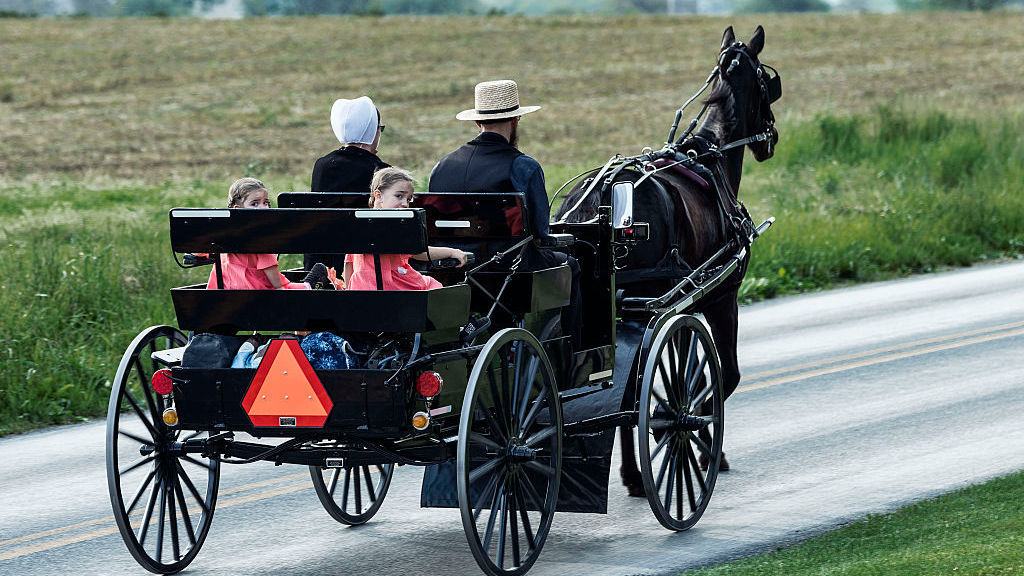 Currently Amish settings are quite popular, especially in romance, and the author must pull the reader into this oddly different, yet current world. In this case, it’s a world without many of our familiar forms of communication or transportation. Making that world attractive is what pulls a reader in to care about the people who live and fall in love there. And critical to making that world attractive are characters the reader must care about the characters wherever they live. Currently Amish settings are quite popular, especially in romance, and the author must pull the reader into this oddly different, yet current world. In this case, it’s a world without many of our familiar forms of communication or transportation. Making that world attractive is what pulls a reader in to care about the people who live and fall in love there. And critical to making that world attractive are characters the reader must care about the characters wherever they live.
XX
The Hallmark channel has done this with all its Christmas movies. Most of us don’t live in that kind of town in this century where everyone  knows everyone, and everyone seems to mind everyone else’s business. So, how do their writers make viewers who thrive on the hustle and anonymity of city life care? It’s a common trope – one of the main characters is almost always someone who has a busy, rewarding life in a big city, and for one reason or another, has returned to the small town they grew up in and couldn’t wait to get out of years before. Yet, while that character has every intention of going back to the life they put on hold while they dealt with whatever issue brought them home, the people, the life, the memories of what once was begins to eat away at that plan. While the character is being beguiled by the small-town life, so is the watcher, or reader. knows everyone, and everyone seems to mind everyone else’s business. So, how do their writers make viewers who thrive on the hustle and anonymity of city life care? It’s a common trope – one of the main characters is almost always someone who has a busy, rewarding life in a big city, and for one reason or another, has returned to the small town they grew up in and couldn’t wait to get out of years before. Yet, while that character has every intention of going back to the life they put on hold while they dealt with whatever issue brought them home, the people, the life, the memories of what once was begins to eat away at that plan. While the character is being beguiled by the small-town life, so is the watcher, or reader.
XX
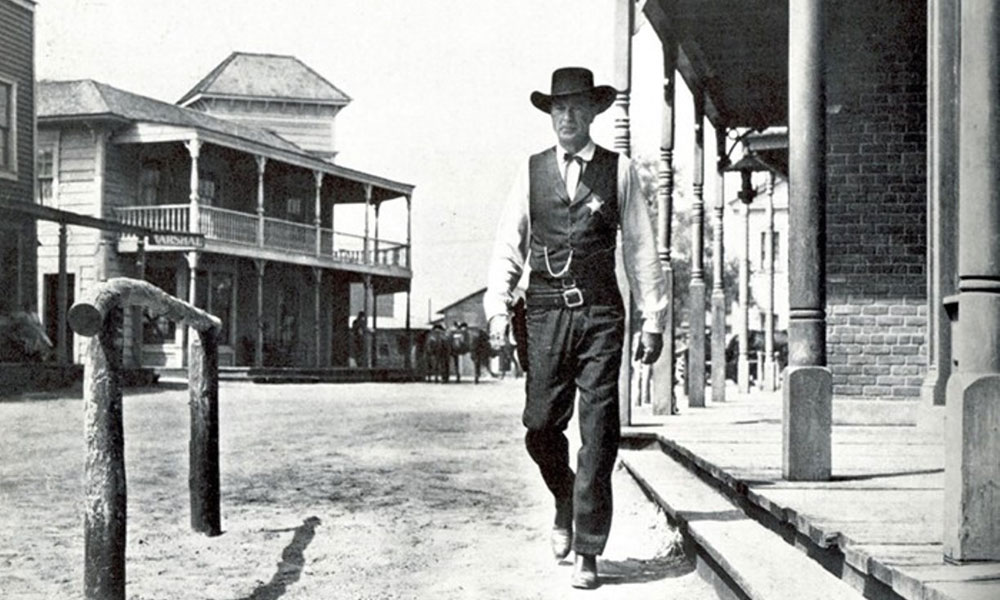 Writers of westerns are faced with a whole different set of aspects, many of which are not all that appealing. The hard-scrabble grit of real life in a western town of a hundred and fifty years ago could be a real turn-off. A posse riding out to catch a bad guy seems exciting. The arrival of the stagecoach has so much potential. But the realities of riding heard on cattle going to market, or the back-breaking toil of farm life before the advent of modern machinery – not so much. Authors need to make readers gloss over the unpleasant and focus on the exciting, heartwarming, rewarding aspects of that era. And again, it’s the characters who are going to hook the readers. If the local sheriff complains about the realities of the outhouse, the reader isn’t going to care. If the heroine moans about doing laundry by hand, she isn’t going to get nearly the audience that she will if we see her carefully sewing her wedding dress – by hand. Writers of westerns are faced with a whole different set of aspects, many of which are not all that appealing. The hard-scrabble grit of real life in a western town of a hundred and fifty years ago could be a real turn-off. A posse riding out to catch a bad guy seems exciting. The arrival of the stagecoach has so much potential. But the realities of riding heard on cattle going to market, or the back-breaking toil of farm life before the advent of modern machinery – not so much. Authors need to make readers gloss over the unpleasant and focus on the exciting, heartwarming, rewarding aspects of that era. And again, it’s the characters who are going to hook the readers. If the local sheriff complains about the realities of the outhouse, the reader isn’t going to care. If the heroine moans about doing laundry by hand, she isn’t going to get nearly the audience that she will if we see her carefully sewing her wedding dress – by hand.
XX
 Historical novels of all eras tend to gloss over the less pleasant realities of their time. For most of us in today’s world, daily showers or baths are a way of life, but not that long ago, people were fortunate to bathe once a week. My dad once told me of a fellow worker he knew when he was young man who sewed himself into his long underwear in the fall and didn’t take them off until spring. Can’t imagine he smelled all that enticing, but he wouldn’t have been alone in traveling about with his own little cloud of odor following him everywhere. But that’s what folk in the 17th century used pomander balls for – hollow balls worn on ribbons about the neck and filled with spices to cover up the unpleasant odors. Trips to an outhouse in the middle of the night, especially in winter with frost on the seat and a cold wind howling down your back is hardly likely to hook any reader into caring much except to thank God they don’t live that way. Historical novels of all eras tend to gloss over the less pleasant realities of their time. For most of us in today’s world, daily showers or baths are a way of life, but not that long ago, people were fortunate to bathe once a week. My dad once told me of a fellow worker he knew when he was young man who sewed himself into his long underwear in the fall and didn’t take them off until spring. Can’t imagine he smelled all that enticing, but he wouldn’t have been alone in traveling about with his own little cloud of odor following him everywhere. But that’s what folk in the 17th century used pomander balls for – hollow balls worn on ribbons about the neck and filled with spices to cover up the unpleasant odors. Trips to an outhouse in the middle of the night, especially in winter with frost on the seat and a cold wind howling down your back is hardly likely to hook any reader into caring much except to thank God they don’t live that way.
XX
 So, I’ve mentioned a few of the less pleasant aspects to our historical past that writers of historical fiction have to work around. And I’m sure you’ve already guessed how we deal with them – we don’t even mention them. Instead, we mention the grandeur of the castle, the triumph of successfully bringing in the harvest, the coziness of a roaring fire in a ranch or great hall, the beautiful gowns, the courtliness of the society and chivalrous knights. Those are the things that hook the reader and keep them reading. So, I’ve mentioned a few of the less pleasant aspects to our historical past that writers of historical fiction have to work around. And I’m sure you’ve already guessed how we deal with them – we don’t even mention them. Instead, we mention the grandeur of the castle, the triumph of successfully bringing in the harvest, the coziness of a roaring fire in a ranch or great hall, the beautiful gowns, the courtliness of the society and chivalrous knights. Those are the things that hook the reader and keep them reading.
XX
 War is another world most of us, thank God, have never had to experience firsthand and those that have rarely talk about the horrors of it, so novels set in wartime have a faithful following of readers, who revel in the glory of winning the good fight and putting the enemy down. But if the writer wants to hook new readers, they have to make them care about who is doing the fighting, the suffering, and the dying. To do, that they tap into emotions we can all relate to: fear, love, hate, triumph, and sensations we’ve all experienced: bitter cold, reviving warmth, the scent of roasting food, the stench of things burning that shouldn’t be burning, the sound of footsteps, be they threatening or welcome. By using all the senses, the writer can put the reader right smack into the scene even if it’s one they personally have never been in, and in doing so make them care about the characters who people this unfamiliar world. War is another world most of us, thank God, have never had to experience firsthand and those that have rarely talk about the horrors of it, so novels set in wartime have a faithful following of readers, who revel in the glory of winning the good fight and putting the enemy down. But if the writer wants to hook new readers, they have to make them care about who is doing the fighting, the suffering, and the dying. To do, that they tap into emotions we can all relate to: fear, love, hate, triumph, and sensations we’ve all experienced: bitter cold, reviving warmth, the scent of roasting food, the stench of things burning that shouldn’t be burning, the sound of footsteps, be they threatening or welcome. By using all the senses, the writer can put the reader right smack into the scene even if it’s one they personally have never been in, and in doing so make them care about the characters who people this unfamiliar world.
XX
Another way a writer of historical novels captivates the reader is with an inside peek at the things that brought us to where we are today. Whether it’s the politics of another era, the empire building of the Romans, or the English and Spanish that followed, or the formation of our own democracy, having a glimpse of the things that made those eras grand can capture a reader’s attention and keep them reading.
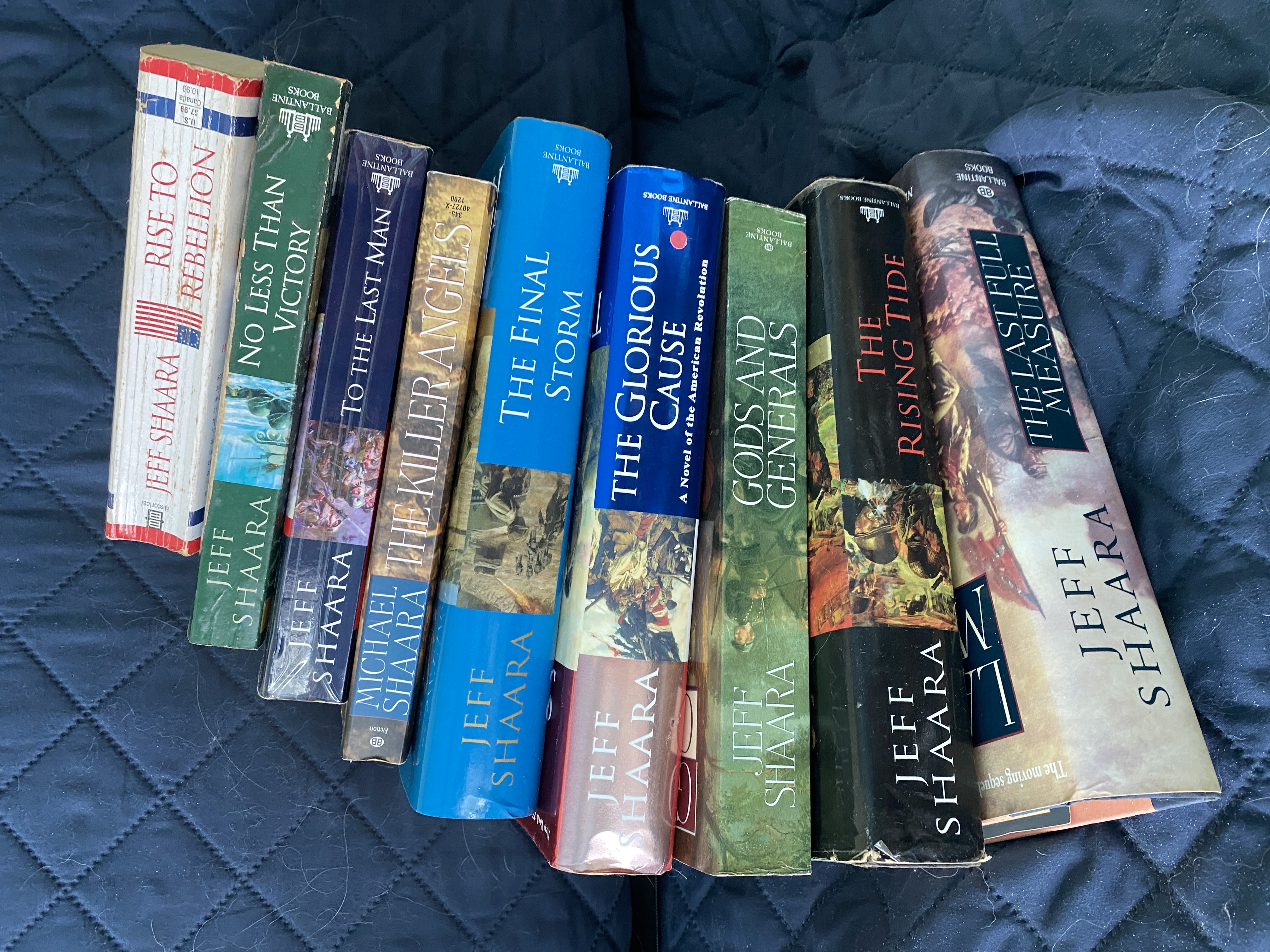 XXXX XXXX
I have a set of books on my shelf written by Michael and Jeff Shaara (father and son.) They are technically novels as they put words into the mouths and thoughts into the heads of the main characters, but those characters were real people, people who were in some part responsible for creating the America we live in today, from the Revolutionary War to Korea and Vietnam. The authors were meticulous in their research and the stories are told from several points of view, including men and women on both sides of the fight, from privates to generals (and their wives or daughters.) I devoured those novels and thought, both when I was reading them and since, that it’s a shame they are not required reading in our schools. What a way to capture the interest and attention of students who have no desire to learn about history than to tell it the way these two men did. Because they get into the heads and hearts of the people of the times, they make the reader care. When was the last time you read a history book and cared much about any of the people you met there? Yet in the Shaara books, we meet Robert E. Lee, not when he was a general, but as a freshly minted Captain not long out of West Point, young, eager and finding his way in his new world. We sit down to a meal prepared by Abigail Adams while she absorbs the discussion of the men and forms her own opinions of what’s going on. In the Shaara books we become the players of history and that’s what hooks us and keeps us reading even when we already know the ending, and even in an arena we are completely unfamiliar with. There are likely authors in other countries who have managed to capture the imaginations of those living in today’s world and transported them back to times long past, as well.
 XXXX XXXX
Bottom Line, you can create all kinds of uncommon settings from spaceships to tall ships. From the castles of royalty in any era to the cube farms where so many spend their working lives today, or the frozen front lines in the Korean War, or an alien world peopled by creatures we wouldn’t recognize. It’s the characters who hook the reader and make them care in any world.
XX
Why not hop on over and see what two of my fellow Round Robin Blog Hoppers have to say about Hooking the reader in Uncommon settings – or for that matter with uncommon characters.
XX
XX
XX
Dr. Bob Rich - Nonhuman is not inhuman
Connie Vines - http://mizging.blogspot.com/

Friday, August 18 2023
After a week that brought far more surprises and stress than I thought possible after arriving home after two months away and a three-day drive, I’m amazed I’m even getting this blog written, but here goes.
 ZZ ZZ
My personal favorite is first person both to read and write because I feel like I AM the person living the story. I’m in their head, feeling, seeing, thinking, and reacting to the events going on around me. The first book I wrote that finally got published was written in first person, because it was one man’s personal life falling apart right in the middle of a very close three-way race for the White House. Everything was going well until a man he’d never met handed Matt a photo from a long ago time he’d done everything to forget, to emotions he never wanted to relive. How he dealt with the issue and the choices he made were the story, so I wanted to tell it from his POV and first person was the best way to get into his head.
ZZ
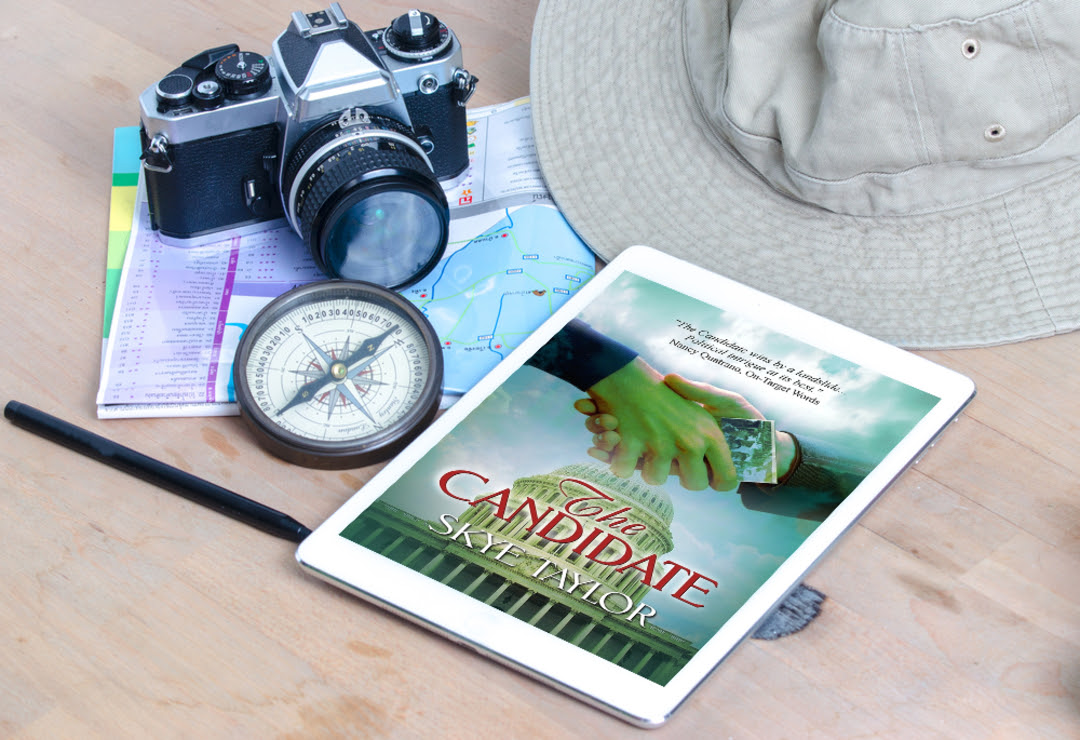 But then, I pitched it at a conference and the editor loved the premise and asked to read it. She still loved the story and the premise but thought it didn’t have enough tension, and she suggested writing in third person so I could see into the other candidates he was running against. I ended up adding the point of view of the young man who brought him the photo in the first place because he was a pivotal character in the story. The next time I pitched it, the editor contracted it. The Candidate is still, all the books I’ve written since, one of the two best I’ve written – my humble opinion. But I have to agree with that first editor. It was stronger when I and the reader knew what the other candidates were up to and definitely created more tension. But then, I pitched it at a conference and the editor loved the premise and asked to read it. She still loved the story and the premise but thought it didn’t have enough tension, and she suggested writing in third person so I could see into the other candidates he was running against. I ended up adding the point of view of the young man who brought him the photo in the first place because he was a pivotal character in the story. The next time I pitched it, the editor contracted it. The Candidate is still, all the books I’ve written since, one of the two best I’ve written – my humble opinion. But I have to agree with that first editor. It was stronger when I and the reader knew what the other candidates were up to and definitely created more tension.
ZZ
 For my romances, both the time travel (Iain’s Plaid) and the series (The Camerons of Tide’s Way) it never occurred to me to try first person because anyone reading a romance wants to know what both halves of the love story and thinking and feeling. I have read one amazingly great romance written in the first person. But the twist was that each alternating chapter was first the heroine, then the hero, then back to the heroine. That story was compelling because we got into the heads and hearts of both characters in a way third person often doesn’t allow. But I didn’t go that route – I chose the more conventional third person so the reader could be in the POV of both the hero and the heroine in every chapter if the transitions were done well. Two of my books in the Tide’s Way series (Healing a Hero and Worry Stone) have won silver in the Royal Palm Literary Awards so clearly the judges thought so as well. For my romances, both the time travel (Iain’s Plaid) and the series (The Camerons of Tide’s Way) it never occurred to me to try first person because anyone reading a romance wants to know what both halves of the love story and thinking and feeling. I have read one amazingly great romance written in the first person. But the twist was that each alternating chapter was first the heroine, then the hero, then back to the heroine. That story was compelling because we got into the heads and hearts of both characters in a way third person often doesn’t allow. But I didn’t go that route – I chose the more conventional third person so the reader could be in the POV of both the hero and the heroine in every chapter if the transitions were done well. Two of my books in the Tide’s Way series (Healing a Hero and Worry Stone) have won silver in the Royal Palm Literary Awards so clearly the judges thought so as well.
ZZ
 Then I decided to try writing a mystery. And for some reason, since it wasn’t a romance I guess, and I like first person, I wrote Bullseye in the First Person POV of my protagonist, Detective Jesse Quinn. I like that story as have my readers, but when I started out to write book two in the series, I wondered if I had made a mistake. So much easier to create suspense if you see into the heads of others – especially the bad guy. I even wrote a scene between the killer and the victim that the reader would know about but my heroine would not. But then I decided to keep the series consistent and that scene is in a file somewhere while I tackled telling the story from Jesse’s point of view. Not sure what I’ll do with the next book in the series – time will tell. Then I decided to try writing a mystery. And for some reason, since it wasn’t a romance I guess, and I like first person, I wrote Bullseye in the First Person POV of my protagonist, Detective Jesse Quinn. I like that story as have my readers, but when I started out to write book two in the series, I wondered if I had made a mistake. So much easier to create suspense if you see into the heads of others – especially the bad guy. I even wrote a scene between the killer and the victim that the reader would know about but my heroine would not. But then I decided to keep the series consistent and that scene is in a file somewhere while I tackled telling the story from Jesse’s point of view. Not sure what I’ll do with the next book in the series – time will tell.
ZZ
And now I’m plotting out a whole new series, but I haven’t decided on POV yet. Since I have just one main protagonist, I would like to return to my favorite, first person. She will have a love life – everyone needs a little romance in their lives, but the main story is hers and she’s the mover in the series so that’s the way I’m leaning. And like I did with the mystery I just finished, I’ve already written the first scene: Here’s a teaser:
ZZ
My heart plummeted as my boss outlined his plans, pulling the last rug out from under me. Just a week ago, I’d been a happily married woman with two wonderful sons I’d just driven to college leaving time for me and Dan to start in on the Bucket List we’d been building over the years. Two nights ago, Dan packed his clothes and left. Without me.
Now I had no marriage. No boys to busy myself with. And now, no job.
No job, that is, unless I wanted to move across the country to a state I never had any desire to live in.
“No need to give me an answer right now, Kenzie,” Bill was saying, his voice coming from a long way off. “Think about it.”
ZZ
So, now it’s time to check in and see what some of my fellow Blog Hoppers think about POV – but do leave me a comment first…..
ZZ
Anne Stenhouse
AJ McGuire
Connie Vines
Helena Fairfax
Monday, August 14 2023
Final round of voting is here and I made it this far - If you liked the cover of my book, Believing in Mac: The Camerons of Tide’s Way (Book 7), won't you please give it another vote in the Cover of the Month contest on AllAuthor.com! https://allauthor.com/cover-of-the-month/16087/
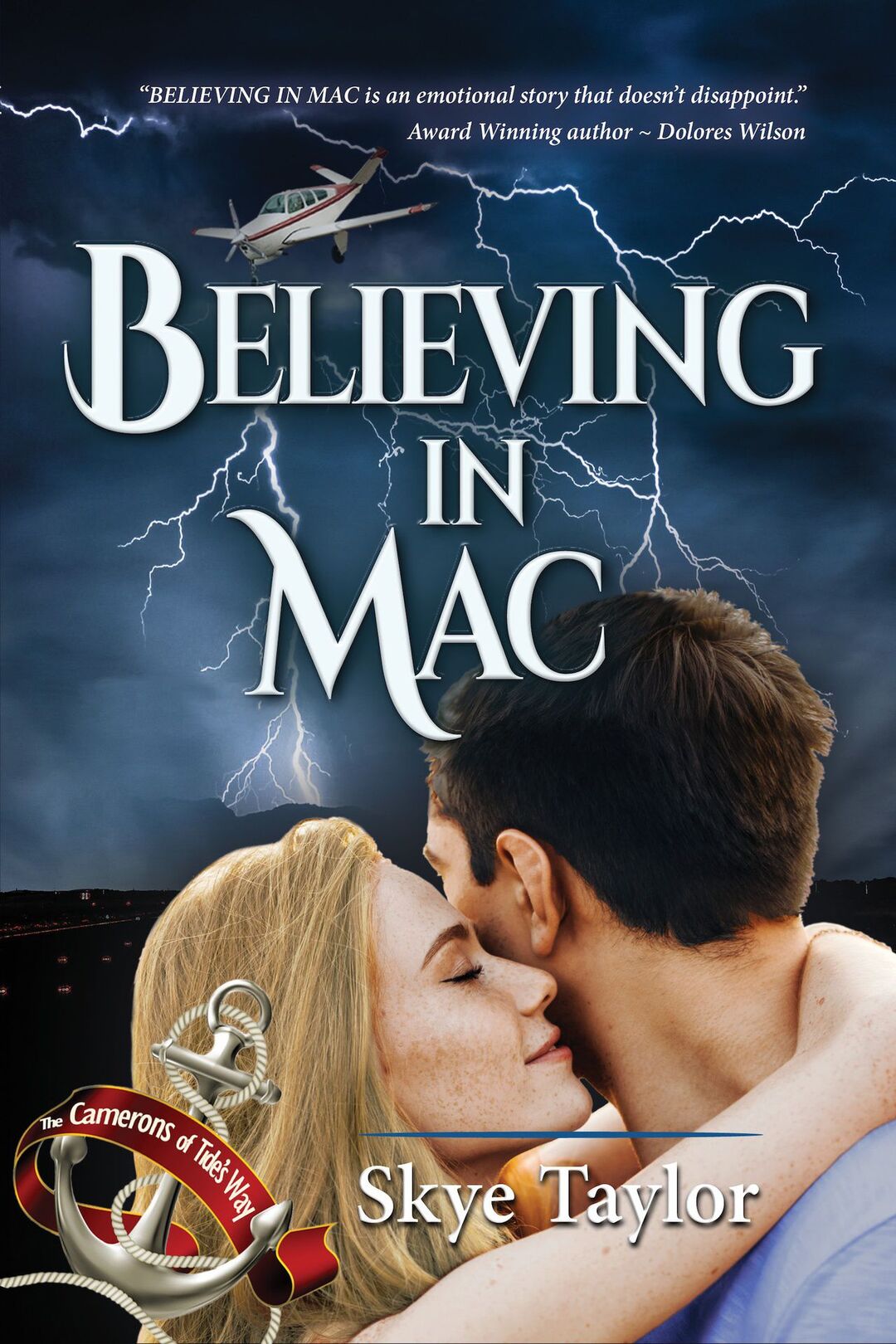
Show me love and vote for my Book Cover at the #CoverOfTheMonth contest. https://allauthor.com/cover-of-the-month/16087/
Monday, July 31 2023
They say not to judge a book by its cover but I need you to do just that. If you liked the cover of my book, Believing in Mac: The Camerons of Tide’s Way (Book 7), please vote for it for the Cover of the Month contest on AllAuthor.com!
https://allauthor.com/cover-of-the-month/16087/ 
Saturday, July 22 2023
This month our Round Robin Bloggers are going to discuss how important is Character Arc to our stories and how does it tie into the plot or story arc? Do we usually give some time and story to character arcs for secondary characters?
XX
There are exceptions to every rule. Jack Reacher, for one, seems to have pretty much no character arc. Sure, he has flaws, but they play into the plot of the suspense and action. Sherlock Holmes comes to mind as another pretty much unchanging character as is Jessica Fletcher in the Murder She Wrote TV series of a few years back. In these books and shows, the plot or story arc is what carries the action and we know little or nothing of the characters outside of the current plot.
XX
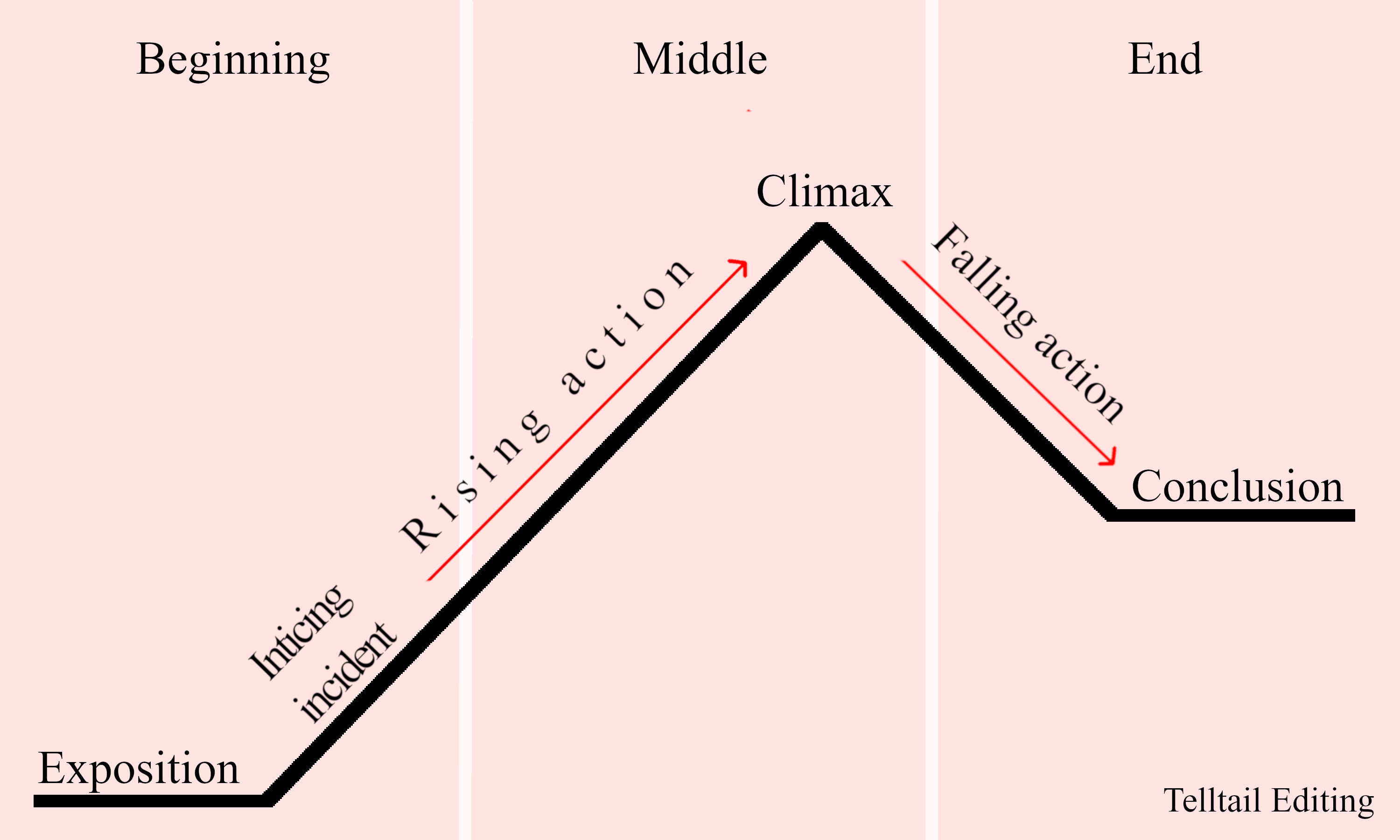 Story arc has five dramatic stages: exposition, rising action, climax, falling action, and resolution. Or to shorten that, a beginning, middle and end. The beginning is when the problem is introduced. Maybe it’s a dead body. Maybe it’s a kidnapped child, or a terrorist threat. But whatever it is, it grabs the reader’s attention by the obvious need to be dealt with, sooner rather than later. And the characters in this kind of story, leap into action to do just that. Finding the cause, or the culprit, figuring out what kind of terrorist attack is brewing and the who/what/why and where is the meat of the story. But without the satisfying ending: The murderer is caught, the threat thwarted and the child rescued, none of us would tune in again, or purchase another book by that author. Story arc has five dramatic stages: exposition, rising action, climax, falling action, and resolution. Or to shorten that, a beginning, middle and end. The beginning is when the problem is introduced. Maybe it’s a dead body. Maybe it’s a kidnapped child, or a terrorist threat. But whatever it is, it grabs the reader’s attention by the obvious need to be dealt with, sooner rather than later. And the characters in this kind of story, leap into action to do just that. Finding the cause, or the culprit, figuring out what kind of terrorist attack is brewing and the who/what/why and where is the meat of the story. But without the satisfying ending: The murderer is caught, the threat thwarted and the child rescued, none of us would tune in again, or purchase another book by that author.
XX
 But, in most of today’s TV action series and police dramas, the cast of characters all have personal lives that intersect and impact the telling of the main story and those personal character arcs add depth and reality to the stories. Fire Country, for instance, features a man on early parole as a volunteer firefighter. There is the chief and his wife and the rest of the men and women on the squad and each of them have a character arc that evolves over the course of the series. Blue Bloods is based on a NY family of cops, a lawyer (Asst DA), a nurse, and their kids and other extended family. Again, all of those characters have a personal character arc that adds interest and reality to the main drama of a cataclysmic fire or the day to day life of law enforcement in NYC. Back when my dad But, in most of today’s TV action series and police dramas, the cast of characters all have personal lives that intersect and impact the telling of the main story and those personal character arcs add depth and reality to the stories. Fire Country, for instance, features a man on early parole as a volunteer firefighter. There is the chief and his wife and the rest of the men and women on the squad and each of them have a character arc that evolves over the course of the series. Blue Bloods is based on a NY family of cops, a lawyer (Asst DA), a nurse, and their kids and other extended family. Again, all of those characters have a personal character arc that adds interest and reality to the main drama of a cataclysmic fire or the day to day life of law enforcement in NYC. Back when my dad  religiously watched Perry Mason, a lawyer who always got his client off (and all his clients were actually innocent) we knew nothing about Mr. Mason the man. Was he married? Have kids? Aging parents? Did he play poker? Drink? Who knew? Today’s TV lawyers all have a life that the writers skillfully incorporate into the theme of the main story. For series that span several seasons, there are love affairs and marriage, kids are born or going off to college. Some characters even struggle with drug or alcohol addiction, gender issues and other hot topics of the day. But all those individual character arcs add compelling interest in the series and keeps viewers tuning in every week and readers eager to buy the next book as soon as it comes out. religiously watched Perry Mason, a lawyer who always got his client off (and all his clients were actually innocent) we knew nothing about Mr. Mason the man. Was he married? Have kids? Aging parents? Did he play poker? Drink? Who knew? Today’s TV lawyers all have a life that the writers skillfully incorporate into the theme of the main story. For series that span several seasons, there are love affairs and marriage, kids are born or going off to college. Some characters even struggle with drug or alcohol addiction, gender issues and other hot topics of the day. But all those individual character arcs add compelling interest in the series and keeps viewers tuning in every week and readers eager to buy the next book as soon as it comes out.
XX
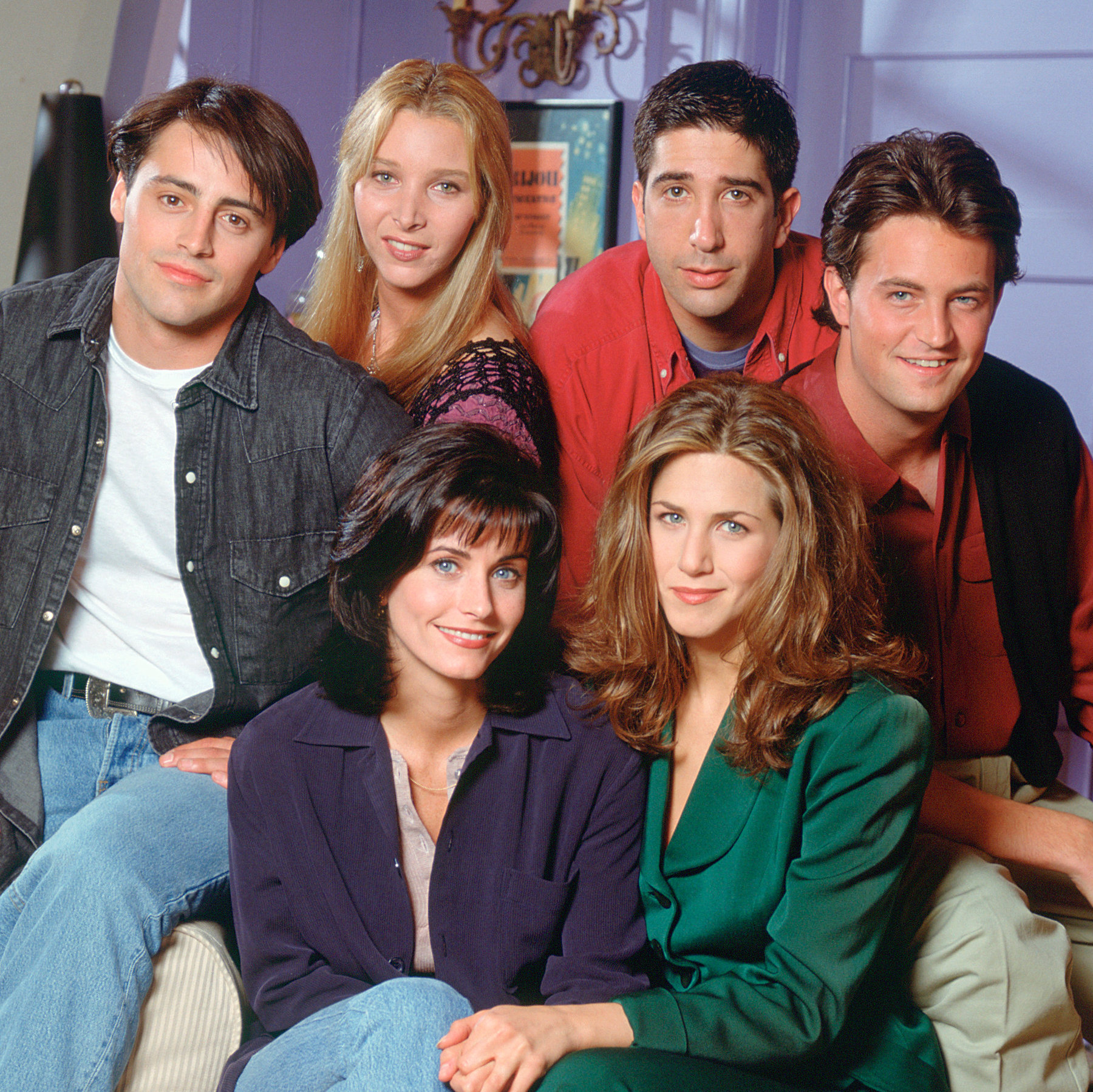 But then there are the stories that depend entirely on character arc. Romances. Family dramas. Women’s Fiction and others. There is a story arc in all of these books, too, but it is the character arc that makes or breaks the book. What do the characters want, why, and what’s stopping them? In the TV comedy series, Friends, or Big Bang Theory, each week was another view into the lives of these individual characters and their jobs, free time etc, but it was their personal growth that carried the series from one year to the next. Romances happened, jobs changed, neighbors came and went and every time the characters involved had to grow or adapt to the new realities. Their character arcs were as important to the success of the series as the comedic presentation. But then there are the stories that depend entirely on character arc. Romances. Family dramas. Women’s Fiction and others. There is a story arc in all of these books, too, but it is the character arc that makes or breaks the book. What do the characters want, why, and what’s stopping them? In the TV comedy series, Friends, or Big Bang Theory, each week was another view into the lives of these individual characters and their jobs, free time etc, but it was their personal growth that carried the series from one year to the next. Romances happened, jobs changed, neighbors came and went and every time the characters involved had to grow or adapt to the new realities. Their character arcs were as important to the success of the series as the comedic presentation.
XX
 But in our novels, this is even more important. Our main characters must grow and change. They have to fight their individual battles and come out stronger, smarter, or better able to adapt. For those of you who never read the initial book, Outlander, Clair Beauchamp, a WWII nurse went through the stones and ended up in the mid 1700s. She was faced with a very different world than anything she had ever experienced. Her life was precarious for so many reasons, one being her modern day knowledge of medicine that could get her branded as a witch, to say nothing of the fact she was a stranger in that time and place with no family or friends. Her character arc included learning how to live in those less comfortable times and learning to live with the fact that she had left a husband she loved in the future and was further troubled by falling in love with another man in her new time. At the start, she wanted desperately to go back to her own time, but as that became less and less likely, and her love for Jamie grew, she adapted to not getting her initial desire, but finding peace and meaning in her new life. But in our novels, this is even more important. Our main characters must grow and change. They have to fight their individual battles and come out stronger, smarter, or better able to adapt. For those of you who never read the initial book, Outlander, Clair Beauchamp, a WWII nurse went through the stones and ended up in the mid 1700s. She was faced with a very different world than anything she had ever experienced. Her life was precarious for so many reasons, one being her modern day knowledge of medicine that could get her branded as a witch, to say nothing of the fact she was a stranger in that time and place with no family or friends. Her character arc included learning how to live in those less comfortable times and learning to live with the fact that she had left a husband she loved in the future and was further troubled by falling in love with another man in her new time. At the start, she wanted desperately to go back to her own time, but as that became less and less likely, and her love for Jamie grew, she adapted to not getting her initial desire, but finding peace and meaning in her new life.
XX
 In contemporary romances there are two character arcs: the hero and the heroine. Each has something they want, often in opposition to each other. If you’ve ever watched the Hallmark channel you’ve probably had your fill of women who left home the moment they graduated high school, turned their backs on family and the boy they loved and planned never to come back and yet….here they are back in their home town, usually quaint while they were living the busy life in the city. First thing they realize is their old love is still here and usually not attached for one reason or another and all the old feelings are still there under the skin. But there’s history to be dealt with. The abandonment, or the belief that the other never cared as much as the hero or heroine once thought. Sometimes the story conflict is that either the hero or the heroine has been sent to purchase a property for the purpose of creating some grand new modern enterprise, but the other half of the duo is the current owner and it’s a family property or one with so much history the entire town is against it. Romances always have a happy ever after so that character arc includes learning to appreciate what had been left behind, what is of value now and how to compromise. In contemporary romances there are two character arcs: the hero and the heroine. Each has something they want, often in opposition to each other. If you’ve ever watched the Hallmark channel you’ve probably had your fill of women who left home the moment they graduated high school, turned their backs on family and the boy they loved and planned never to come back and yet….here they are back in their home town, usually quaint while they were living the busy life in the city. First thing they realize is their old love is still here and usually not attached for one reason or another and all the old feelings are still there under the skin. But there’s history to be dealt with. The abandonment, or the belief that the other never cared as much as the hero or heroine once thought. Sometimes the story conflict is that either the hero or the heroine has been sent to purchase a property for the purpose of creating some grand new modern enterprise, but the other half of the duo is the current owner and it’s a family property or one with so much history the entire town is against it. Romances always have a happy ever after so that character arc includes learning to appreciate what had been left behind, what is of value now and how to compromise.
XX
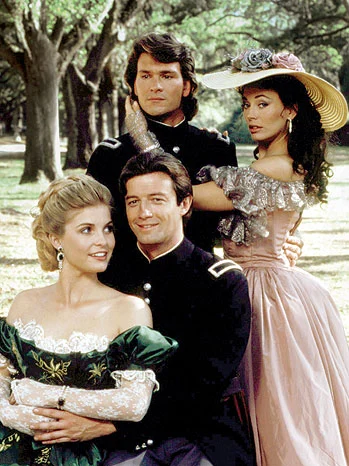 In a family drama, often there is no happy ever after, but the character arc is still of paramount importance. Think of all the family dramas you might have read or watched over the years. Dallas on TV or the Kent Family Chronicles by John Jakes. Over the course of those stories there were good times and bad, war and peace, love and loss, joy and grief. But it was how the various characters learned to cope, to grow and deal with the vicissitudes of life that made those stories compelling. Sometimes the characters flourished through desire and the hard work required to succeed. Sometimes it was loss that they had to come to terms with. But always, it was their growth that made them and the stories real. In a family drama, often there is no happy ever after, but the character arc is still of paramount importance. Think of all the family dramas you might have read or watched over the years. Dallas on TV or the Kent Family Chronicles by John Jakes. Over the course of those stories there were good times and bad, war and peace, love and loss, joy and grief. But it was how the various characters learned to cope, to grow and deal with the vicissitudes of life that made those stories compelling. Sometimes the characters flourished through desire and the hard work required to succeed. Sometimes it was loss that they had to come to terms with. But always, it was their growth that made them and the stories real.
XXXX
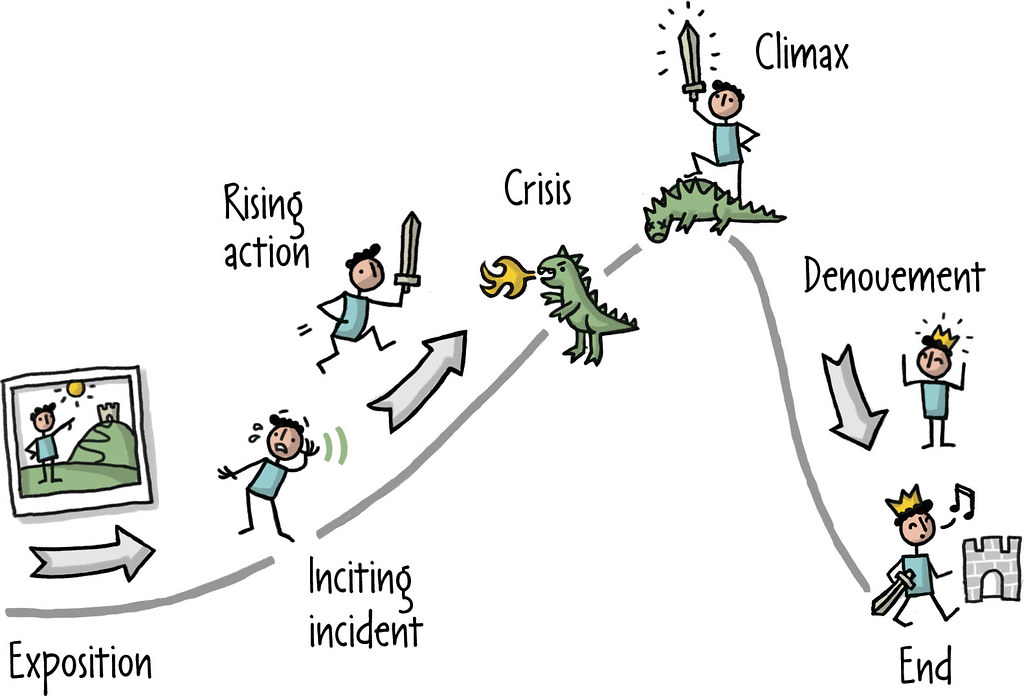 Character ARC, is, as you see here, very similar to the story arc, but is focused on the character rather than the plot. This arc often drives the plot, and sometimes the story arc and protgonist's arc have a lot of similar events and roadblocks. Here's where secondary character arcs come in. Secondary characters are either part of the roadblock or part of the solution, and sometimes both which will require both characters to grow, adapt and compromise. Character ARC, is, as you see here, very similar to the story arc, but is focused on the character rather than the plot. This arc often drives the plot, and sometimes the story arc and protgonist's arc have a lot of similar events and roadblocks. Here's where secondary character arcs come in. Secondary characters are either part of the roadblock or part of the solution, and sometimes both which will require both characters to grow, adapt and compromise.
XX
I'm currently writing book 2 in my Jesse Quinn mystery series. The main story arc is the solving of two crimes, that of repeating grafitti on a local church, and then the murder of the church's controversial pastor. Are they connected? Or is there something else going on? Jesse and her temporary partner have very different ideas so both characters will have to grow and adapt, compromise and in the process, learn to work together. My heroine, Jesse Quinn, a detective with the St John's County Sheriff's Department, also has a character arc outside of her position as detective that continues from book one into book two. She is divorced and shares custody of her two teenagers. The son is a decent kid that overcame some of his issues before the story opens, but the daughter is going through her early teen years pushing every button Jesse has. In this new book, Jacqui wants to live with her father and Jesse has to come to terms with the loss of the close friendship they shared before Jacqui hit her teen years, all the while trying to decide what is best for her daughter now and going forward. Then she's going to have to learn to live with whatever decisions she makes. It's a growth story for both Jesse and her daughter. And then there's Seth, the man who would like to be more in Jesse's life than he is up to now. Jesse isn't sure she's ready to take on another romantic entanglement while pursuing a career as the only woman on the major crimes squad. Her character arc adds depth and interest to the ongoing police investigation and realism to her life as a detective and a mom. Those of Seth and Jacqui add depth to Jesse's story.
XX
So, I challenge you to think about the stories that have stuck with you long after you watched or read them and think about what it was that made them so memorable. Why did you enjoy them? Why do you still think about the characters you met within those pages? I’m betting you will come to agree, it was their personal character arcs that made them impossible to forget, and the book impossible to put down or the TV series you couldn't wait to tune into each week.
XX
So, why not hop on over and see what my other Blog Hop Authors think about Character Arc.
XX
 Anne Stenhouse Anne Stenhouse
Connie Vines
Diane Bator
Helena Fairfax
Marci Baun
Victoria Chatham
A.J. Maguire
|